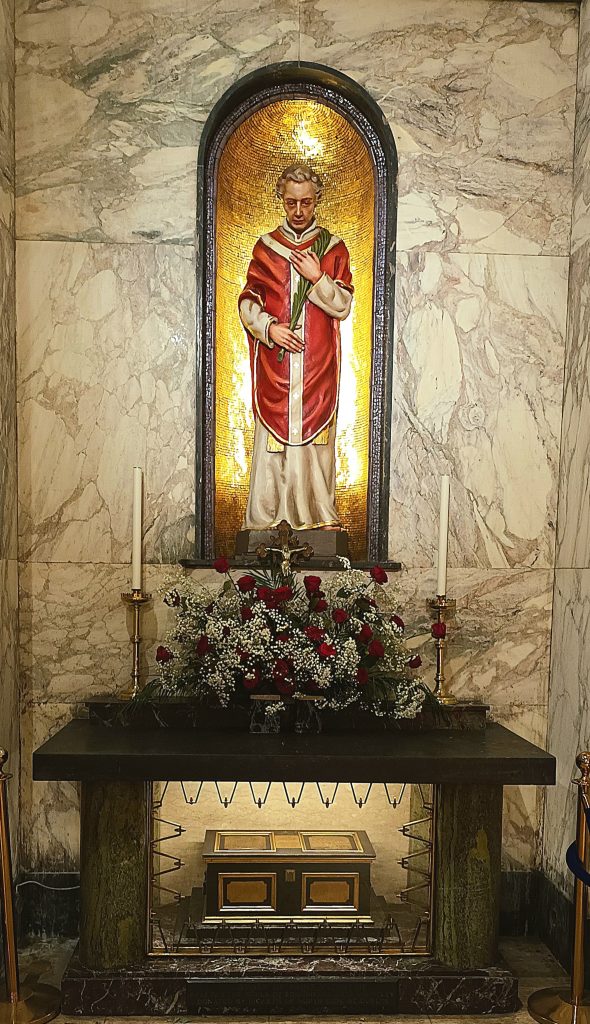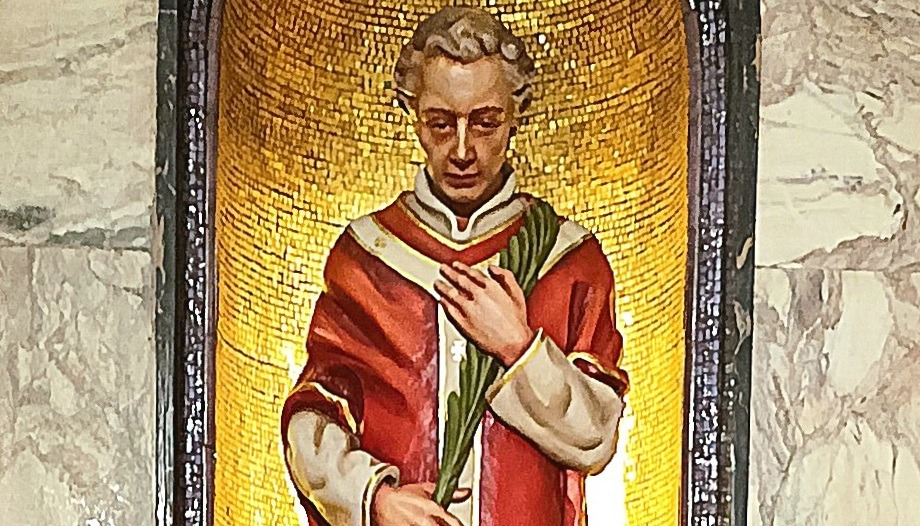On February 14th, the Church and popular culture celebrate St. Valentine's Day. This date owes its name to a saint whose history is marked by uncertainty. St. Valentine of Rome is a difficult figure to place in the space and time of antiquity, which does not prevent him from being one of the best known saints. After the Second Vatican Council, Valentine was removed from the saints' calendar, but his date is still remembered locally.
Since the Middle Ages, the feast of lovers began to be celebrated on February 14th. Some say it is because St. Valentine would celebrate weddingas in times of prohibition of marriages. Others say it is because it is the beginning of the mating season in nature. Be that as it may, the reality is that it is a date known worldwide as the day of lovers.
Whitefriar Church
Due to the aforementioned historical inaccuracies, the remains of the saint are lost throughout the length and breadth of the European continent. So much so that there are several temples, scattered all over the geography, that claim to have relics of St. Valentine. The veracity of these claims is difficult to prove, but what is certain is that relics are a good way to encourage the piety of the faithful.
In the Church of Whitefriar Streetalso known as Our Lady of Mount Carmel (Dublin, Ireland), some bones and blood of St. Valentine are preserved in a chapel. Its prior, Father Simon Nolan, talks in this interview about the history of relics in Dublin, the popular cult and the intercession of the saints.
How did the relics of St. Valentine get to Ireland?
-Father John Spratt (1796-1871), a former Carmelite prior of Whitefriar Street, was noted for his work to relieve the poor of DublinHe was also a renowned orator. After a tour giving homilies in the churches of Rome in 1835, Pope Gregory XVI presented Father Spratt with the relics of St. Valentine. The Carmelite church on Whitefriar Street was just being built at the time (it was erected in 1825) and by giving the relics the Pope also wanted to show his support for the Dubliners.

There is a very strong symbolism in the relics of St. Valentine, which were recovered from the Roman catacombs, arriving in Ireland when the Church was emerging after the Catholic emancipation (which took place in 1829).
The remains were brought in procession to Whitefriar Street Church in 1836 and received by the Archbishop of Dublin, Murray. The relics have been here ever since.
The current shrine of St. Valentine dates from the fifties of the last century and has an altar with a glass front, where the reliquary is located, and a statue of the saint. The image was made by a famous Irish sculptor, Irene Broe. The statue of St. Valentine shows the saint wearing the red robes of a martyr and holding a palm, a symbol of the triumph of the martyrdom.
There are many relics of St. Valentine all over Europe, how do we know these are authentic?
-The original documentation from the Holy See states that the reliquary contains some bones of St. Valentine, martyr, with some blood. We have never claimed to have all the relics of St. Valentine, it is possible that there are several relics of the saint in different places.
What is the connection between Valentine's Day and lovers?
-St. Valentine (3rd century) lived in a tumultuous period of the Roman Empire, a time of war. As part of the war effort, Emperor Claudius II forbade Roman soldiers to marry. St. Valentine defied the ban and secretly married loving couples. He paid the ultimate price for his work, as he was executed on February 14, 269, which is now his feast day.
St. Valentine is a witness and defender of the marriage. He was willing to lay down his life for the cause of human love and the freedom of religion.
Is it okay for Catholics to visit relics?
-Of course! For hundreds of years Catholics have been encouraged to venerate relics. It is not even possible to consecrate an altar in a Catholic church if relics of saints are not placed inside it. The Mass starts with the priest kissing the altar containing the relics. Relics allow us to approach the saints, members of Christ, children and friends of God, our intercessors. Religion is not meant to be merely intellectual.
Much of our religion involves sensory elements (the images, incense and the musicfor example). Relics help us to feel close to the saints, who have already reached the place where we want to go.
However, relics should bring us closer to the saint and, above the saint, to God, beyond the invisible and the material. They should lead us to consider the love of God made real in the saint; to seek to learn from the virtuous life of the saint and to follow his example; to give thanks to God who confirms the virtue of the saint through signs and healings that come through his intercession.
How can we ask God for favors through the saints?
-Through the prayer of petition, praying by asking, in other words. Everything is modeled on the Lord's prayer, the Our Father, which is the pattern of all prayer. The Lord's Prayer begins by praising God the Father and then goes on to ask for things: daily bread, deliver us from evil, etc.
We believe that we can ask the saints for help because they are close to God. They intercede for us before God. They are our "helpers" and "friends" in Heaven. All healings, all graces, are granted by God, but the saints can help us by asking God, by being at our side, especially when life is difficult. They understand what it is to live as men even while contemplating the divine.
We don't know for sure if St. Valentine existed, or if the stories told about him actually relate to three different men, how then can he be one of the most popular saints?
-St. Valentine lived in an extremely tumultuous time, associated with the beginning of the fall of the Roman Empire. Contemporary records of this time do not usually survive. The reality is that most mentions of St. Valentine date from a few hundred years after his death. Some things were passed down orally. It is very common for saints to have different traditions, -usually in different places-, "different voices" with different "stories" that are passed on and eventually written down.
How many people visit the Sanctuary of St. Valentine? Why do people go there?
Many people visit the sanctuary throughout the year but the week leading up to the holiday we are extremely busy at the church on Whitefriar Street, where a lot of national and international media interest gathers.
Some engaged couples visit the sanctuary this week and receive blessings. Tour groups, schools, scout groups and university groups also come. Countless couples come to the shrine to celebrate their love, and also people who are looking for love, or people who are going through difficulties in their marriage or who are worried about their sick children. Many sign the shrine's petition book, leaving their prayers, hopes and wishes.








